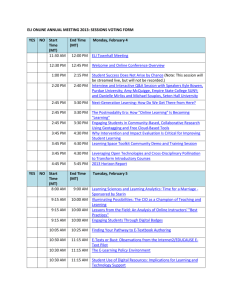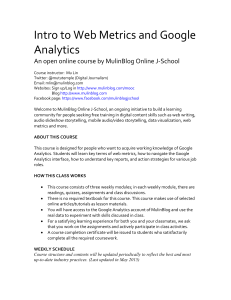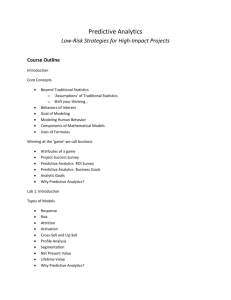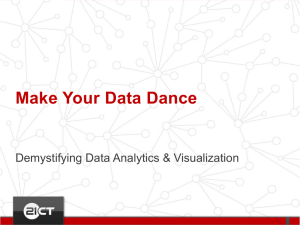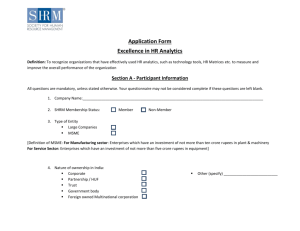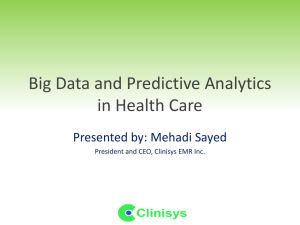HR Analytics - Salem Human Resources Management Association
advertisement
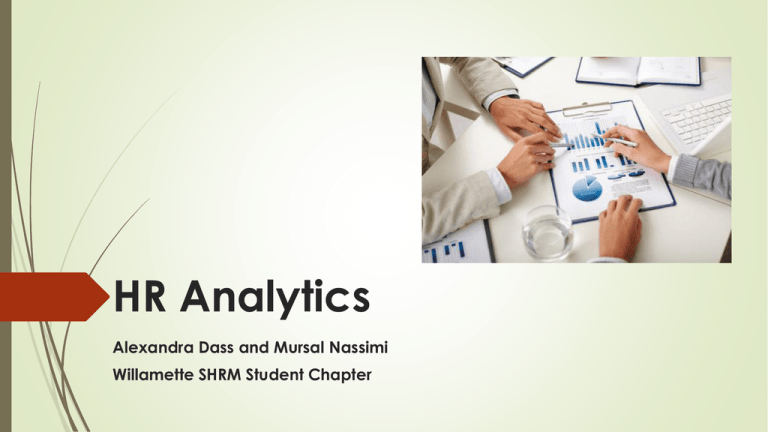
HR Analytics Alexandra Dass and Mursal Nassimi Willamette SHRM Student Chapter What is HR Analytics? A form of business intelligence Correlates business data and people data Establishes a cause and effect relationship Why HR Analytics? Engage in evidence-based decision making Improve employee performance Get a better return on investment Make relevant decisions HR Analytics HR METRICS, SCORECARDS, DASHBOARDS ORGANIZE Information Evidencebased knowledge Stakehold ers and decisionmakers Value creation ROI Cost-benefit Efficiency • Effectiveness • Impact Statistical tools & techniques Employee segments Job groups Level Location, etc. Type of data Source of data Data INTERPRET ANALYZE Source: Lisbeth Claus and Kendal Callison, Global HR Analytics, in Global HR Practitioners Handbook, Volume 3 , 2014 (Forthcoming) HR Analytics – More than HR Metrics Metrics tangible past data reporting controlling HR ownership Analytics intangible future insights analyzing optimizing management ownership Types of Metrics Efficiency Effectiveness Impact Source: Boudreau and Ramstad, Beyond HR,2003 Table Discussion Which types of leaves apply to your organization? Handout: Types of leaves of absences Table Discussion Do you have any idea of what absenteeism looks like in your organization? The Process What specific (employee) data is needed to turn this topic into HR analytics? Where (internal/external) does HR get that data? Who ‘owns’ that data and how does HR get access to that data? What are common HR metrics related to this topic? What does your spreadsheet look like? What will your sample dashboards look like? What types of actions would you be able to take? Source: Lisbeth Claus and Kendal Callison, Global HR Analytics, in Global HR Practitioners Handbook, Volume 3 , 2014 (Forthcoming) What type of data would you need in this case? Unit of analysis (employee record) Data employee number gender age job group (function) job level (hierarchy) job classification (exempt, non exempt) salary(rate) Performance review location leave classification (type) leave status duration Internal Scan: Absenteeism 100 90 80 70 60 50 40 30 20 10 0 100 90 80 70 60 50 40 30 All leaves 20 10 Medical Non-medical 0 100 90 80 70 60 50 40 30 20 10 0 A B C 100 90 80 70 60 50 40 30 20 10 0 Salem Portland Enterprise Advantages and Disadvantages of HR Analytics Advantages Disadvantages Recognize skills and vulnerabilities of the workforce Predict and measure turnover Understand and mitigate risk Human behavior cannot be controlled Access to the right information Difficulty in integrating data Leading Practices Build a numeracy culture Use evidence-based knowledge Ensure integrity of data Identify relevant data Sample data



